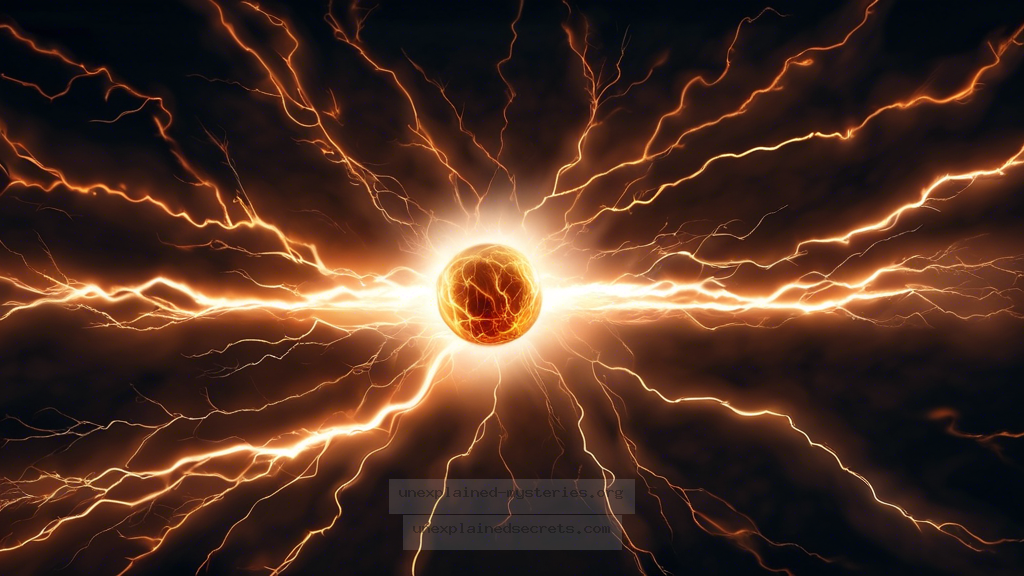What Causes the Mysterious Phenomenon of Ball Lightning?
What Causes the Mysterious Phenomenon of Ball Lightning?
Ball lightning is one of the most perplexing and enigmatic phenomena in atmospheric science. This glowing, spherical object has been reported to appear during thunderstorms, often floating or darting about before suddenly vanishing or exploding. The elusive nature of ball lightning and its strange behavior have left scientists puzzled for centuries. Understanding what causes ball lightning is not only essential for unraveling a scientific mystery but also critical for enhancing safety protocols during thunderstorms. In this post, we will explore the historical context, core theories, practical implications, alternative perspectives, and ongoing research surrounding this fascinating phenomenon.
Historical Context of Ball Lightning
The phenomenon of ball lightning has been documented for hundreds of years, with reports dating back to the 19th century. One of the earliest recorded instances occurred in 1638 when the English scientist William Gilbert described a glowing ball that appeared during a storm. Over the years, various accounts from eyewitnesses have suggested that ball lightning can vary in size, color, and behavior. Some individuals have reported seeing it hover near the ground, while others have observed it darting around in erratic patterns.
Despite its long history, ball lightning remains poorly understood. Many scientists initially dismissed these reports as mere superstition or optical illusions. However, the increasing number of eyewitness accounts and the development of modern observational technology have reignited interest in this mysterious phenomenon. Today, the scientific community is actively investigating ball lightning, seeking to understand its nature and origins.
- 1638: William Gilbert’s first documented account.
- 1900: A report from a Russian astronomer describing a ball of light during a thunderstorm.
- 1970s: Multiple eyewitness accounts from pilots and meteorologists.
Core Concepts and Theories Surrounding Ball Lightning
Several theories have been proposed to explain the origins of ball lightning, ranging from plasma formations to chemical reactions. Below, we delve into some of the most notable theories:
- Plasma Theory: Some scientists propose that ball lightning is a form of plasma — an ionized gas that conducts electricity. This theory suggests that during a lightning strike, the intense heat may create a plasma ball that can persist for a short time.
- Vapor Theory: Another theory posits that ball lightning may be formed from vaporized silicon or other materials that are released during a lightning strike. When these materials cool quickly, they could form glowing spheres.
- Electric Field Theory: This theory suggests that ball lightning is generated by a highly charged electric field. When atmospheric conditions are favorable, the charge could coalesce into a glowing sphere.
- Chemical Reactions: Some researchers propose that specific chemical reactions may create luminescent gas balls. This theory is still under investigation.
Practical Implications of Ball Lightning Research
Understanding ball lightning has significant implications for public safety, especially in regions prone to thunderstorms. The unpredictability of ball lightning poses risks to both people and property. For instance, there have been reports of ball lightning entering homes, causing fires and electrical damage. By studying this phenomenon, scientists aim to develop better warning systems and safety measures during electrical storms.
Moreover, advancements in the understanding of ball lightning could lead to breakthroughs in energy storage and plasma technology. If researchers can replicate the conditions that create ball lightning, it might open pathways to new energy sources or innovative applications in materials science.
Alternative Perspectives on Ball Lightning
While the scientific community has made strides in understanding ball lightning, alternative perspectives exist. Some skeptics argue that eyewitness accounts of ball lightning may be exaggerated or misinterpreted. They suggest that other natural phenomena, such as St. Elmo’s fire or sprites (upper-atmospheric lightning), might be mistaken for ball lightning.
Additionally, cultural interpretations of ball lightning vary widely. In some cultures, it is viewed as a supernatural occurrence or a sign from the gods. These interpretations may influence how people perceive and report their experiences with ball lightning, complicating scientific understanding.
- St. Elmo’s Fire: A weather phenomenon that produces a glow at the tips of pointed objects.
- Sprites: Electrical discharges occurring high above thunderstorms.
- Supernatural Beliefs: Cultural interpretations that may influence perception.
Common Misconceptions About Ball Lightning
Despite ongoing research, several misconceptions persist regarding ball lightning. One prevalent myth is that ball lightning is merely an optical illusion. While some occurrences may be misperceptions of other phenomena, many documented cases involve tangible, physical objects. Another misconception is that ball lightning is exclusively associated with thunderstorms. In fact, reports have emerged of ball lightning occurring in various environments, including indoors.
Another myth is that ball lightning is dangerous and always destructive. While some instances have resulted in injury or property damage, many cases report that ball lightning simply hovers or drifts without causing harm. This variability adds to the intrigue and complexity of the phenomenon.
Best Practices for Investigating Ball Lightning
For researchers and enthusiasts interested in studying ball lightning, there are several best practices to consider:
- Documentation: Always document sightings with as much detail as possible, including time, location, weather conditions, and descriptions of the phenomenon.
- Engaging with Experts: Collaborate with meteorologists, physicists, and atmospheric scientists to gain insights into possible explanations and theories.
- Using Technology: Utilize modern technology, like high-speed cameras and sensors, to capture and analyze ball lightning occurrences.
- Participate in Citizen Science: Engage in community science projects that focus on atmospheric phenomena. Data collection can contribute to broader understanding.
Future Developments and Ongoing Research
The quest to understand ball lightning is ongoing, with researchers around the world employing various strategies to unlock its secrets. One promising avenue involves advanced modeling and simulation techniques that aim to recreate the conditions necessary for ball lightning formation. Researchers are also exploring the potential for laboratory experiments to replicate ball lightning, which could yield valuable insights into its properties and behavior.
Furthermore, international collaborations are enhancing the scope of research. By pooling resources and knowledge, scientists hope to identify patterns and correlations in ball lightning occurrences across different regions and climates. The future of ball lightning research may also be shaped by advancements in technology, leading to real-time monitoring and analysis of atmospheric phenomena.
- Modeling and Simulation: Creating theoretical frameworks for ball lightning.
- Laboratory Experiments: Attempting to replicate ball lightning in controlled environments.
- International Collaborations: Sharing data and insights across borders.
Conclusion: The Enigma of Ball Lightning
The mystery of ball lightning remains one of the most intriguing puzzles in atmospheric science. With a rich historical context, a variety of theoretical explanations, and significant practical implications, ball lightning invites both skepticism and fascination. Ongoing research promises to deepen our understanding of this enigmatic phenomenon, potentially leading to breakthroughs in science and technology. As we continue to explore the nature of ball lightning, we not only seek to unravel its mysteries but also enhance our safety and understanding of the natural world. Whether viewed through a scientific lens or a cultural perspective, ball lightning captivates our imagination and challenges our understanding of physics and atmospheric phenomena. 💡
Other Articles
Recent Posts
- What Happened to Flight MH370? The Conspiracy Theories That Still Haunt Us
- What Secrets Lurk Within the Walls of the Infamous Trans-Allegheny Lunatic Asylum?
- What Evidence Supports the Existence of Bigfoot in the Pacific Northwest?
- What Happened to the Indus Valley Civilization? Unraveling the Mysteries of Ancient Urban Life
- Can Telepathy Be Scientifically Proven Through Laboratory Evidence?







